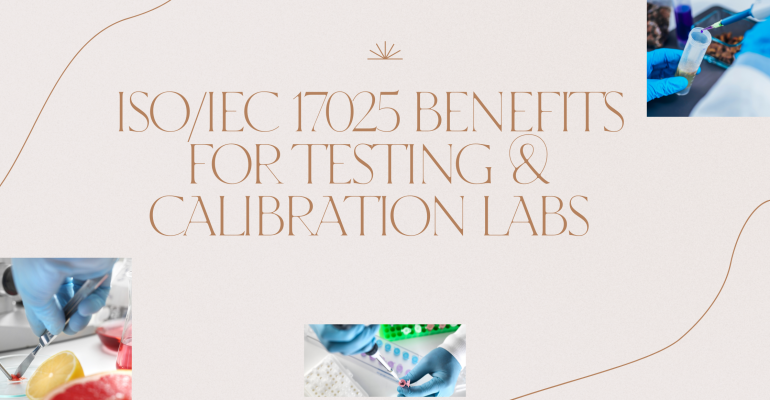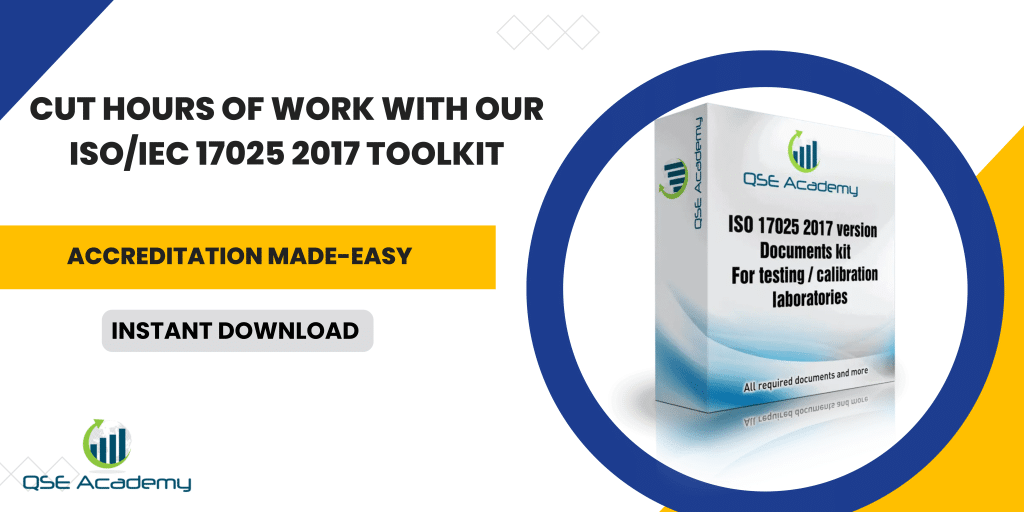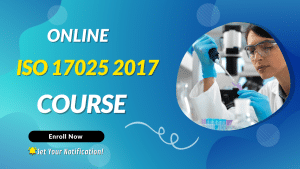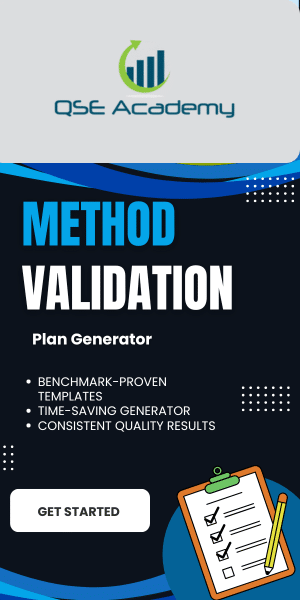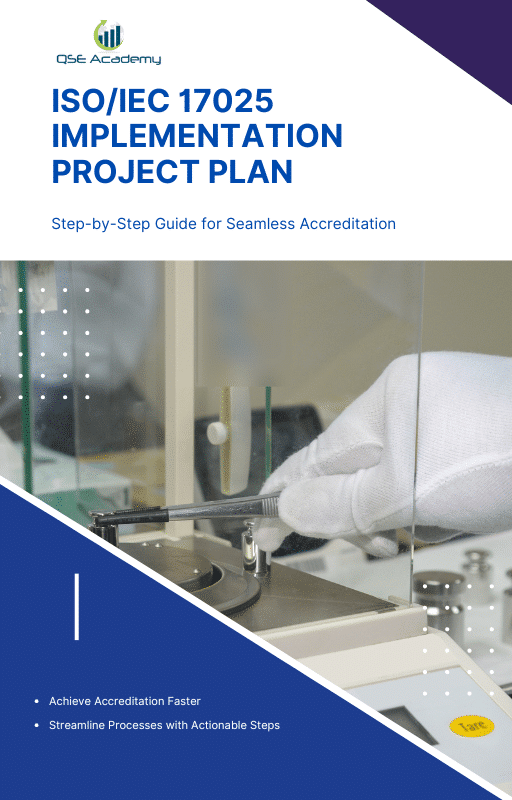ISO/IEC 17025 Benefits for Testing & Calibration Labs
Last Updated on October 13, 2025 by Melissa Lazaro
Introduction – Why This Standard Matters
Let’s be real—many testing and calibration labs know they should get accredited, but they’re not entirely sure why. They hear about ISO/IEC 17025 all the time, but between daily workloads, client demands, and tight budgets, it ends up on the “someday” list.
Here’s what I’ve noticed after years of helping labs across different industries: the ones that commit to ISO/IEC 17025 don’t just pass audits—they transform how they operate. Their results become more consistent, their clients start trusting them more, and their teams feel more confident about the work they deliver.
In my experience, accreditation is like giving your lab a credibility upgrade. It tells clients, regulators, and even competitors that your data isn’t just good enough—it’s technically valid, traceable, and internationally recognized.
In this article, we’ll unpack the real benefits of ISO/IEC 17025 for testing and calibration laboratories. We’ll go beyond the theory and talk about what it means in practice—for your operations, your clients, and your bottom line.
By the end, you’ll see exactly why ISO/IEC 17025 isn’t just another standard—it’s the foundation of a lab that delivers results people can trust.
Improved Technical Competence & Measurement Accuracy
Here’s what I’ve seen time and time again—most labs think they’re already doing things right. They’ve got experienced technicians, decent equipment, and a process that “works.” But when you start mapping those processes against ISO/IEC 17025 requirements, small cracks start to show.
Let’s be real—technical competence isn’t just about knowing how to run a test or use a calibration standard. It’s about proving that your results are accurate, repeatable, and traceable to recognized references. That’s where ISO/IEC 17025 sets a higher bar.
In my experience, accreditation pushes labs to tighten every link in the measurement chain. You start validating your test methods instead of relying on “what’s always worked.” You track calibration intervals based on performance, not just a calendar reminder. You make sure every result you issue can be traced back to a standard that holds up under scrutiny.
One calibration lab I worked with discovered during its accreditation prep that two of their reference weights were out of tolerance—something routine checks had never caught. Once they implemented ISO/IEC 17025 controls, their measurement uncertainty dropped, and client complaints virtually disappeared.
Pro Tip: Don’t wait for an external audit to spot inconsistencies. Conduct internal method verifications regularly—it’s the fastest way to catch hidden issues before they affect results.
Common Pitfall: Many labs assume that having a calibration certificate means their measurements are “automatically traceable.” Not necessarily. Always check the accreditation status and scope of your calibration provider.
When you apply ISO/IEC 17025 principles correctly, you don’t just meet a standard—you sharpen your lab’s technical edge.
Enhanced Customer Confidence & Credibility
Let’s get real—clients today are skeptical. They’ve seen flashy marketing claims and “certified” results that don’t always hold up under scrutiny. What they really want is proof that your lab’s results are reliable. That’s where ISO/IEC 17025 comes in.
In my experience, once a lab becomes accredited, something shifts. Clients stop asking if your results are valid—they start trusting that they are. You no longer need to convince them with words; your accreditation speaks for you.
Here’s an example: one of my clients, a small materials testing lab, used to struggle landing contracts with large manufacturers. They were good—technically skilled—but not accredited. After achieving ISO/IEC 17025 accreditation, they didn’t just win new clients—they started getting direct requests from procurement teams that previously ignored them. The difference? Credibility.
ISO/IEC 17025 signals that your lab meets international standards for competence. It shows your processes are documented, your staff are qualified, and your equipment is properly calibrated. Clients know that if you’re accredited, your results can be trusted—locally and globally.
Pro Tip: Make your accreditation visible. Display your certificate on your website and include your accreditation scope in proposals. Clients appreciate transparency—it builds confidence faster than any sales pitch.
Common Pitfall: Some labs assume that once accredited, the work is done. But trust is built through consistency. Keep communication clear, issue reports on time, and maintain the same quality standard long after the audit’s over.
At the end of the day, ISO/IEC 17025 doesn’t just prove competence—it earns confidence. And that’s what keeps clients coming back.
Global Recognition & Market Access
Here’s something I tell every lab I work with—ISO/IEC 17025 is your passport to the global market.
Let’s be honest: you can produce the most accurate test results in the world, but if they aren’t recognized internationally, your reach stays limited. That’s where ISO/IEC 17025 changes the game.
This standard is backed by the ILAC Mutual Recognition Arrangement (MRA)—a global network of accreditation bodies that agree to accept each other’s results. In simple terms, it means that if your lab is ISO/IEC 17025-accredited in one country, your test or calibration results are accepted in many others without the need for re-testing or additional validation.
I’ve seen this benefit firsthand. One environmental lab I assisted in Southeast Asia was struggling to expand into international contracts. Their local clients trusted them, but foreign clients demanded “proof” that their reports met global standards. After achieving ISO/IEC 17025 accreditation, they started exporting data and services overseas—with zero pushback. Their credibility instantly crossed borders.
Pro Tip: When you plan to enter new markets, review your scope of accreditation. Make sure it aligns with your target industry’s requirements. Expanding your scope strategically is far more effective than chasing every possible parameter.
Common Pitfall: Some labs forget that international recognition only applies if their accreditation body is an ILAC signatory. Always verify this before investing in the process—it’s a small check that makes a huge difference.
At the end of the day, ISO/IEC 17025 doesn’t just strengthen your technical foundation—it opens doors. Your reports become more than documents—they become credentials that carry global weight.
Operational Efficiency & Continuous Improvement
Here’s what I’ve noticed over the years—labs often see ISO/IEC 17025 as a “quality badge,” but they miss one of its biggest benefits: efficiency.
Let’s be real—many testing and calibration labs waste time and resources without realizing it. Repeated tests, unclear procedures, inconsistent recordkeeping—it all adds up. ISO/IEC 17025 fixes that by forcing you to take a hard look at how you operate.
In my experience, once a lab implements a proper management system, things start to click. You eliminate duplication. You standardize how data is handled. Everyone knows who’s responsible for what. Suddenly, turnaround times improve, and customer complaints drop.
One calibration lab I worked with cut their testing backlog by 40% just by tightening document control and clarifying responsibilities. They didn’t add staff—they simply applied the system consistently.
This is important because ISO/IEC 17025 isn’t just about compliance—it’s about continuous improvement. The standard pushes you to identify nonconformities early, analyze root causes, and prevent issues from recurring. It’s a built-in feedback loop that keeps your lab sharp.
Pro Tip: Treat internal audits as opportunities, not obligations. Use them to find inefficiencies, not just nonconformities. The best labs use audits as mini health checks for their systems.
Common Pitfall: Some labs see the management system as paperwork and ignore its purpose. Don’t fall into that trap. The real power of ISO/IEC 17025 lies in how it drives smarter decisions and sustainable improvements.
When you apply it right, ISO/IEC 17025 doesn’t slow you down—it streamlines everything. You end up with fewer errors, faster results, and a stronger, more motivated team.
Risk Reduction & Compliance Assurance
Here’s the truth—every lab faces risks. Equipment drifts out of calibration, staff make mistakes, clients misinterpret reports. You can’t eliminate risk completely, but you can control it. And that’s exactly what ISO/IEC 17025 helps you do.
In my experience, most labs only start thinking about risks when something goes wrong—a failed audit, a client complaint, or a batch recall. But ISO/IEC 17025 takes a smarter approach. It builds risk-based thinking right into your processes. Instead of reacting to problems, you start preventing them.
For example, one of the labs I worked with used to have recurring issues with temperature stability in their testing room. Every few months, results would drift, and they’d waste time re-testing samples. Once they implemented ISO/IEC 17025’s risk management approach, they identified the root cause—a calibration gap in their monitoring system—and fixed it permanently. The problem never came back.
This is important because compliance isn’t just about passing an audit—it’s about consistency. The standard requires you to document how you identify, assess, and control risks that affect the validity of results. It also ensures that when something does go wrong, you have a clear, evidence-based way to respond.
Pro Tip: Keep a simple “risk and opportunity log.” Update it regularly, even for small issues. It helps you spot patterns early and makes audits far less stressful.
Common Pitfall: Many labs treat risk assessment as a one-time exercise. Don’t. Risk management should evolve as your lab grows, adds new tests, or updates equipment.
When you build risk control into your everyday workflow, compliance stops feeling like a burden. It becomes second nature—and your results stay solid, even when things don’t go perfectly.
Competitive Advantage & Business Growth
Let’s be honest—most labs don’t go for ISO/IEC 17025 just for the certificate. They do it because they want to grow. They want to attract more clients, qualify for bigger contracts, and stand out in a crowded market.
And here’s what I’ve seen repeatedly: accreditation changes how clients see you. Once your lab is ISO/IEC 17025-accredited, you’re no longer just another service provider—you’re a trusted authority. Your reports carry more weight. Your name starts showing up on preferred supplier lists. And that credibility directly translates to business growth.
One small calibration lab I worked with used to rely solely on local clients. After getting accredited, they started bidding on government and multinational projects—and winning them. Why? Because ISO/IEC 17025 accreditation met the eligibility requirements for those contracts. It opened doors that were previously closed.
This is important because accreditation isn’t just a technical achievement—it’s a business strategy. It helps you position your lab as reliable, professional, and globally recognized. Clients are willing to pay more for data they can trust, and accreditation is proof that your lab delivers exactly that.
Pro Tip: Use your accreditation strategically in your marketing. Highlight it on proposals, client presentations, and digital platforms. Don’t assume people know what it means—explain how it ensures reliable, traceable, and internationally accepted results.
Common Pitfall: Some labs treat accreditation as a one-time milestone and stop improving afterward. The real value comes from maintaining and expanding your scope over time. Continuous improvement keeps your lab competitive—and keeps your clients coming back.
When you look at it this way, ISO/IEC 17025 isn’t just about compliance—it’s an investment in your lab’s reputation, resilience, and long-term success.
FAQs – Common Questions About ISO/IEC 17025 Benefits
1. Is ISO/IEC 17025 mandatory for all laboratories?
Not necessarily. But if your lab’s results are used for regulatory purposes, product certification, or international trade, accreditation becomes almost essential.
Here’s the thing—clients and authorities rely on results they can trust, and ISO/IEC 17025 is the global benchmark for that. So, while it’s not legally required for every lab, it’s often the deciding factor in who gets the job and who doesn’t.
2. How long does it take to get accredited?
In my experience, it depends on your starting point. Some labs already have solid systems in place and can get accredited within 6 to 8 months. Others, especially those building their quality system from scratch, might take closer to a year.
The key is preparation—performing a gap analysis early helps you understand what needs fixing before the assessment team walks in.
3. Does ISO/IEC 17025 accreditation really improve profitability?
Yes—and not just indirectly. I’ve seen labs cut costs by reducing rework, avoiding client disputes, and catching issues early. On top of that, accreditation opens doors to higher-value contracts and partnerships that were previously out of reach.
It’s not a magic switch, but when done right, ISO/IEC 17025 becomes a strong driver of growth and long-term financial stability.
Conclusion – Turning Accreditation into a Growth Strategy
Let’s be real—ISO/IEC 17025 isn’t just about passing an audit or earning a badge for your wall. It’s about building a lab that clients trust, staff are proud of, and competitors respect.
In my experience, the labs that truly benefit from accreditation are the ones that see it as more than compliance—they see it as a tool for transformation. It sharpens technical competence, improves efficiency, and builds credibility that naturally attracts business growth.
Over the years, I’ve helped labs move from frustration and inconsistency to confidence and recognition. And the common thread among all successful ones? They treated ISO/IEC 17025 as a journey—not a checkbox.
So if you’re still wondering whether it’s worth the effort, here’s my honest take: accreditation pays off in every way that matters. From better data integrity to stronger client relationships, it’s an investment that keeps delivering returns long after the audit is done.
Key Takeaway:
ISO/IEC 17025 isn’t just a standard—it’s a business advantage. It helps your lab stand out, perform better, and grow with confidence.
Your Next Step:
Start by assessing where your lab stands today. A simple readiness review or gap analysis can give you a clear roadmap toward accreditation—and help you unlock the benefits we’ve just discussed.
If you need expert guidance through that process, I’m here to help you design a system that not only meets the standard but makes your lab stronger, leaner, and more trusted than ever.
I hold a Master’s degree in Quality Management, and I’ve built my career specializing in the ISO/IEC 17000 series standards, including ISO/IEC 17025, ISO 15189, ISO/IEC 17020, and ISO/IEC 17065. My background includes hands-on experience in accreditation preparation, documentation development, and internal auditing for laboratories and certification bodies. I’ve worked closely with teams in testing, calibration, inspection, and medical laboratories, helping them achieve and maintain compliance with international accreditation requirements. I’ve also received professional training in internal audits for ISO/IEC 17025 and ISO 15189, with practical involvement in managing nonconformities, improving quality systems, and aligning operations with standard requirements. At QSE Academy, I contribute technical content that turns complex accreditation standards into practical, step-by-step guidance for labs and assessors around the world. I’m passionate about supporting quality-driven organizations and making the path to accreditation clear, structured, and achievable.

